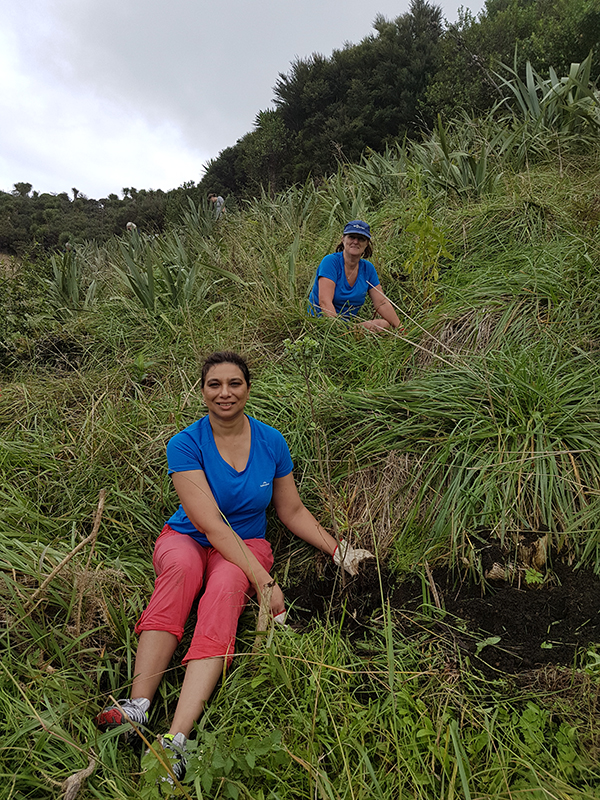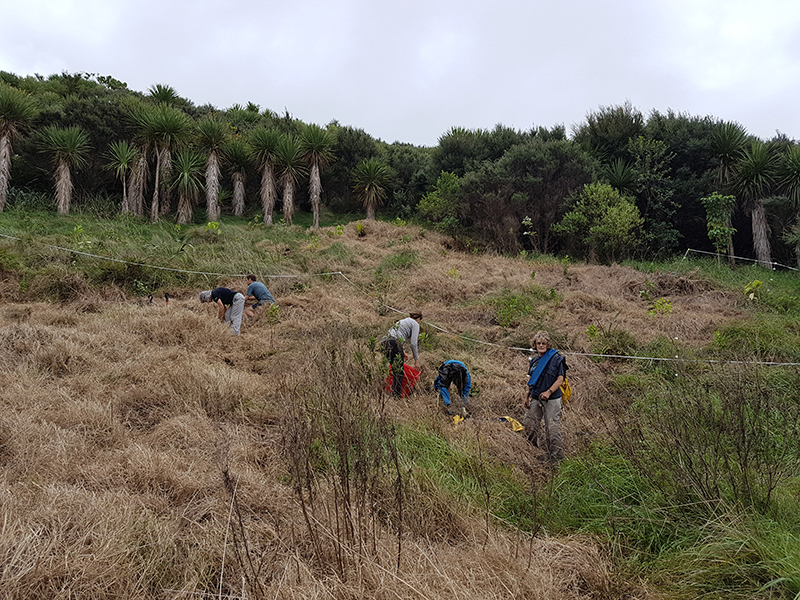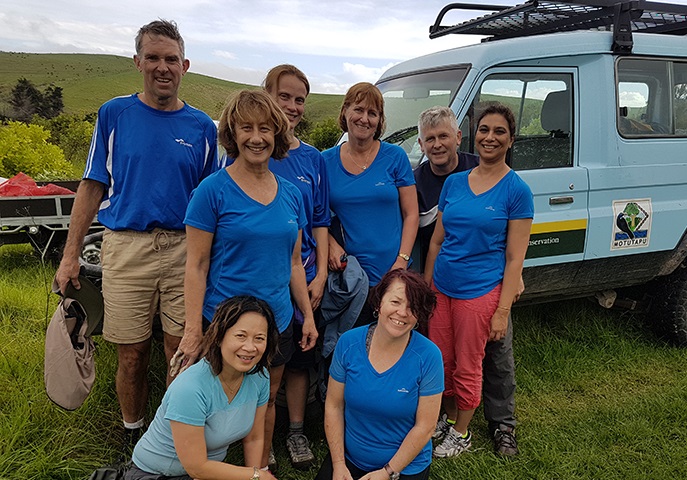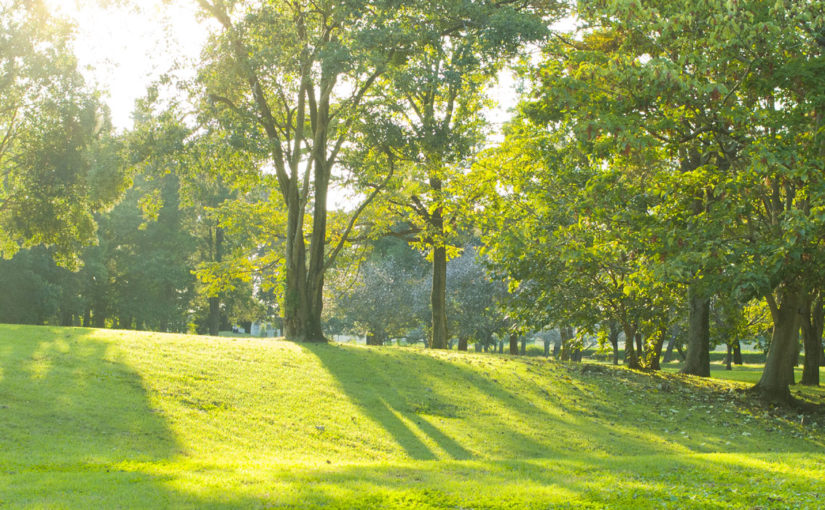Sysmex Gives Back, Planting Natives On Motutapu Island
Despite an adverse weather forecast, rain clouds were noticeably absent as Sysmex New Zealand staff and family members boarded the ferry from downtown Auckland to Motutapu Island on Sunday 29 April. Our team of eight formed part of a larger group who had turned up for the first day of volunteer tree-planting on Motutapu for 2018. As part of Sysmex New Zealand’s commitment to corporate social responsibility, we have been holding an annual environmental day for the past few years, participating in volunteer tree planting initiatives on both Motutapu Island and nearby Motuihe Island.
Once we landed on Motutapu Island, we travelled by convoy to the planting site where we carried boxes of young trees down a very steep hillside. Planting the fledgling trees on the muddy, slippery slope, while doing our best to avoid an abundance of gorse and thistles, was challenging work but team spirits were high and we had a lot of laughs. Though the number of volunteers was not as large as expected, due to the unfavorable weather forecast, we still managed to plant the entire 300 trees which had been prepared for the day in anticipation of a larger group.
Tree-planting is part of the on-going work of the Motutapu Restoration Trust, which has been carrying out ecological restoration on the island for nearly 25 years. During that time, approximately 100 hectares have been re-planted with about 500,000 native trees, and the new forest is being enhanced by natural regeneration. Thanks to the rapidly expanding forest as well as pest eradication efforts, the translocation and release of new species (as well as the self-introduction of birds from nearby islands), has meant native bird populations have been steadily increasing. Motutapu Island is now home to thriving populations of rare species including kiwi and takahe.

Our environmental work on the day was classed as “pioneer planting”, an initial planting of robust species to establish the forest. In three to four years’ time these plants will have grown sufficiently to provide cover and the Trust volunteers will return to plant seedlings of larger native trees, which will eventually grow to form the canopy of the forest.
Caroline Eddy, Marketing Communications Specialist, said the team had enjoyed the day out.

“Although Motutapu Island is just a short ferry ride from the city, I felt as though we were much further out of town, as we drove through a working farm and saw beautiful native forest nearby. It was also interesting to learn about the work of the Motutapu Restoration Trust, and see the tangible results of their efforts so far. The forest beside our planting site, which was planted over a decade ago, now looks lush and well established. Hopefully the trees we planted will look the same in another ten years’ time.”
Deforestation of the island was originally caused by falling ash from the volcanic eruption which created neighbouring Rangitoto Island around 600 years ago. After the arrival of European settlement in the 19th century, the island was converted to farmland, resulting in further clearances of native plant life. The majority of the 1500 hectare island is still farmed pasture, and an operating farm successfully coexists with ecological regeneration efforts. You can read more about the history of Motutapu Island and the work of the Motutapu Restoration Trust on its website.


